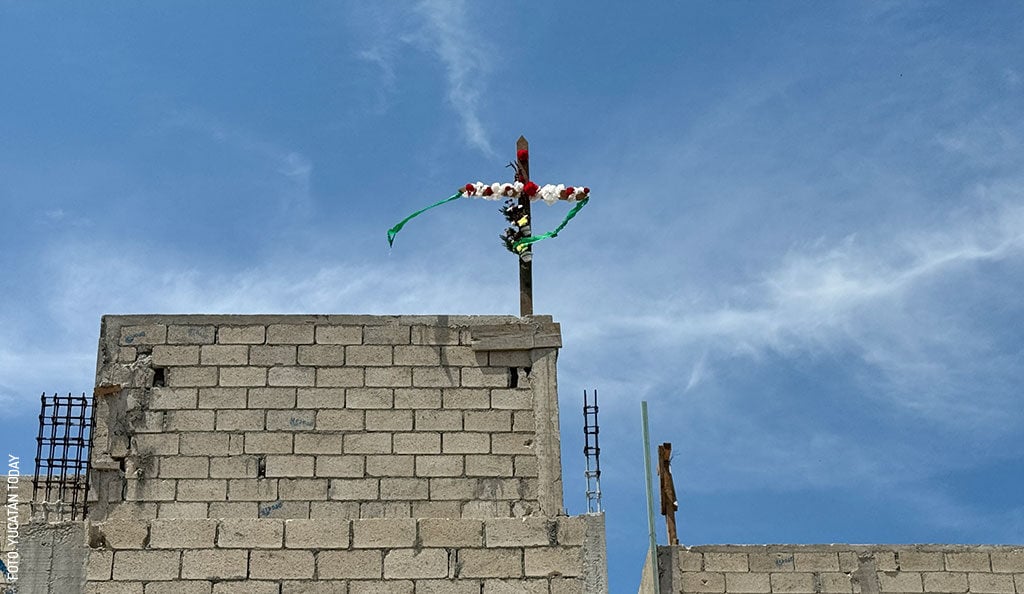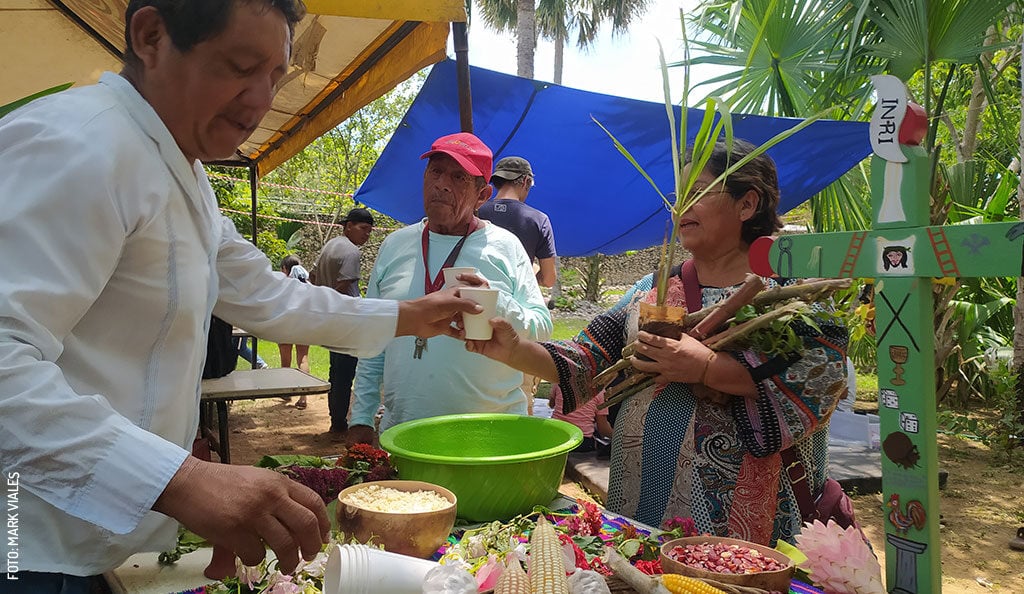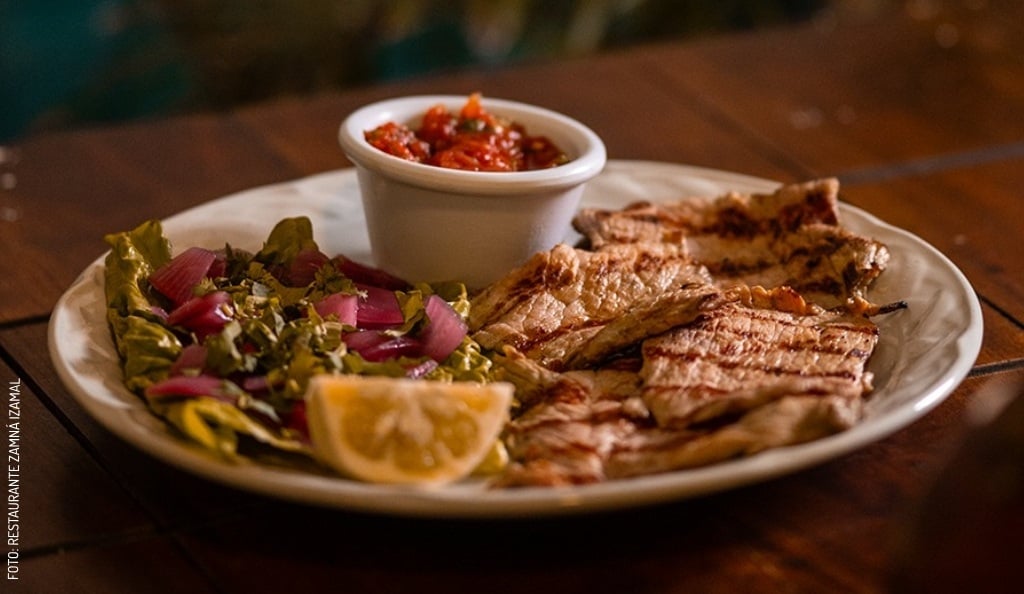
The Wildflowers of Yucatán: The Stars of the Day of the Dead
With Day of the Dead just around the corner, the scent of flowers begins to fill the streets, markets, and homes. In Central México, the cempasúchil (Tagetes erecta, the marigold heavily featured in Disney’s movie Coco) is a key element, representing the beauty and fleeting nature of life and guiding souls back home. However, cempasúchil doesn't naturally thrive in the Yucatán Península; here, tradition dictates the use of a variety of native wildflowers that bloom by the end of October.
As with most living traditions, each village—and often each family—has its own unique practices, with twists and tweaks passed down through generations. Still, the color palette for floral offerings typically includes the following:
- Yellow and orange are represented by the local flower closest to the Mexican marigold: the yellow cosmos (Cosmos sulphureus), known in Maya as xpujuk (pronounced shh-poo-HOOK).
- Red is found in the velvety flowers of the xtés (pr. shh-TAY) or cockscombs (Celosia cristata), which resemble a rooster’s comb. Some believe these flowers represent the blood of Christ and resurrection.
- Purple is associated with death and the underworld, often seen in the flowers of amor seco or globe amaranth (Gomphrena globosa).
- Green is added through branches of the orange jasmine (Murraya paniculata Jacq.) and the leaves of the xiat (shee-AT) palm. Some believe the color green represents the center of the world and life itself.
Beyond their cultural significance, the wildflowers of the Yucatán Península are vital to the local ecosystem and economy. They provide food and shelter for insects and birds, and many have medicinal or ornamental properties.

Important Wildflowers for Local Ecosystems in Yucatán
- Morning Glory (Ipomoea tricolor), known as Campanilla azul, is a beautiful vine found in the wild, especially along roadsides and on walls in sunny, moist soil.
- The Wild Petunia (Ruellia tuberosa), or cracker plant, is a very common and colorful wildflower that blooms year-round. It reproduces easily by seed, forming gorgeous natural clumps of various shades of purple. This small plant is also valued for the medicinal properties found in its leaves and roots.
- The Saint Lucia flower (Commelina erecta L.), or Pah-tsá in Maya, is a delicate flower with two blue petals and one small white one. Its flowers close after midday. It is known for its ability to stop bleeding, and its sap is used to soothe irritated eyes, earning it the name of the patron saint of the blind.
- The Xichilak (Kallstroemia maxima) is an annual herb that grows close to the ground. Its small orange-to-white flowers produce extracts that have been used to fight plant diseases, and in traditional medicine, it is used to help treat boils and skin abscesses.
The flowers that fuel Yucatán's honey
The Yucatán Peninsula is a major honey producer, consistently ranking as a top producer in México and a significant exporter worldwide. The honey from Yucatán is especially prized for its quality, and the local beekeepers, many of whom are Maya, rely on two distinct wildflower blooms, often referred to as the yellow and white honey waves by locals.
The first major bloom is from the tajonal (Viguiera dentata), a wild plant with bright yellow flowers that grows abundantly in the countryside. The honey from this flower is a light, golden amber color with a mild, floral flavor. This marks the beginning of the beekeeping season on the peninsula.
The second key bloom comes from dzidzilché (Gymnopodium floribundum), a native tree with pinkish-white flowers that accounts for a considerable portion of the region's honey production. Dzidzilché honey is considered a gourmet product, with a darker color, an intense floral aroma, and a rich, caramel-like flavor.
In recent years, cycles of drought, aggravated by deforestation and the use of pesticides for golf courses and pest control, have taken a significant toll on local flowers and honey production. One way we can support our local community and environment is by planting endemic plants in our gardens to support our local pollinators. The Yucatán Center for Scientific Research (CICY), located in the Mérida neighborhood of Chuburná de Hidalgo, is a research center that also has a botanic garden and nursery focused on native and endemic plants, and you can purchase plants there.
Endemic or native? What’s the difference?
A native plant is any plant that grows naturally in a certain area. An endemic plant is any plant that grows naturally only in a certain area.
For example, wild petunias are found throughout the Americas; they’re native to Yucatán. The Yucatecan jasmine (Samyda yucatanensis), on the other hand, is only found on the Yucatán Península; it is an endemic plant.
Yucatán’s wildflowers provide traditional remedies, are the lifeblood of a vital industry that has sustained the Maya people for generations, and make our world a more beautiful place.
First published in Yucatán Today print and digital magazine no. 454, in October 2025.

Author: Cordelia Newlin
A writer, researcher, and advocate for nesting divorce, she helps women build new lives in Mexico and can’t stop laughing— mostly at herself
In love with Yucatán? Get the best of Yucatán Today in your email.
Don't miss our best articles and the monthly digital edition before anyone else.
Related articles

The Origin of Construction Workers’ Day: The Foundations of a Celebration
Bricklayer's Day in Mexico: Origin of the Holy Cross, its pre-Hispanic meaning, and how bricklayers celebrate their work every May 3rd.
The Enduring Legacy of Maya Shamans
Don Idelfonso, a Mayan shaman from Chacsinkín, has dedicated his life to learning the language of the jungle, a language that is not spoken, but felt.




